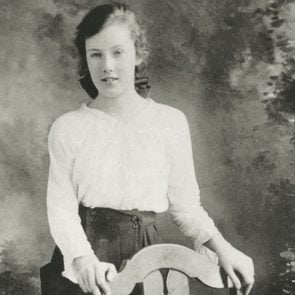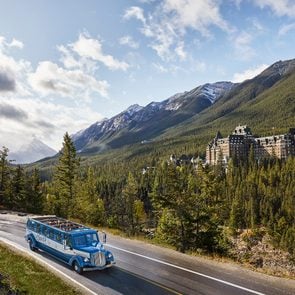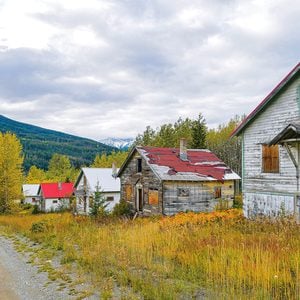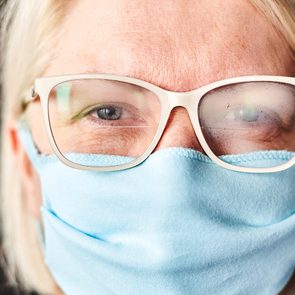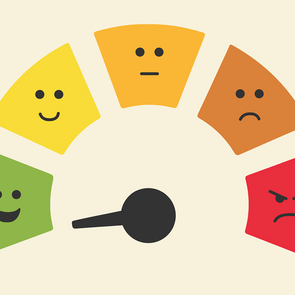We live in an age where more is often better—more food, more drink, more clothes, more money, and so on. Even with the simplest things in life, like washing your clothes, it’s natural to conclude that more is better. But you can make a lot of mistakes with your laundry, including overloading on detergent.
While it seems logical that more suds in the machine would mean squeaky clean garb, it’s actually quite the opposite, according to various laundry experts, including Mary Gagliardi, a.k.a. Dr. Laundry, a scientist at The Clorox Company.
Apparently, using too much detergent can actually create more problems, including stains or residue on clothes, odour left behind in the washing machine from trapped excess residue, loads not having a chance to drain properly, resulting in wetter clothes, increased wear and tear on the washing machine’s pump and motor from the suds acting like a brake, and greater energy required to wash clothes since the machine automatically adds extra rinses and pauses to break down excess suds. Clean laundry already has a lot of bacteria, but detergent overload seems to only make things worse.
With so many problems potentially caused by too much detergent, how can you make sure to not overdo it? According to Gagliardi, you must first understand the three factors that determine cleaning performance in the laundry: thermal energy (water temperature), mechanical energy (agitation), and chemical energy (provided by the detergent and the laundry additives).
“When optimized, these factors work together to provide great cleaning,” Gagliardi says. “You optimize temperature by choosing the hottest water you can because the hotter the water, the better the cleaning. You optimize mechanical energy by increasing the agitation (heavy duty versus delicate cycles), by increasing the agitation time, and by adding an extra rinse. You optimize chemical energy by making sure you use the right amount of a good detergent, and add the appropriate laundry additive for the load being washed.” (These brilliant laundry hacks can also help.)
Understanding what detergent ingredients do in the wash is also enlightening. Gagliardi says a good detergent starts with builders, surfactants, and anti-redeposition agents, which all work together to soften the water so the cleaning agents can remove the soil and then suspend it in the wash water, while also keeping the soil from depositing back onto the clothes. Detergent should also have enzymes that break up protein stains to make it easier for cleaning agents to remove them. Fluorescent whitening agents are also important, as they deposit onto fabrics to capture light from the non-visible part of the spectrum that you can’t see and reflect it in the visible part of the spectrum, as are laundry additives (sodium hypochlorite and colour-safe bleaches), which improve performance over what you’d get with detergent alone. (Learn the secret ingredient in your fridge that can help whiten your laundry without bleach.)
Then there’s the type of washing machine you’re using, which should figure into how much detergent you’re using. High-efficiency (HE) washers use less water, energy, and detergent than traditional washers. “If you have a HE washer, you need to use a HE detergent (and laundry additives that include instructions for use in HE washers),” says Gagliardi. “These products are specially formulated for low water wash conditions, and include surfactants that won’t cause too many suds in the washer.” Oversudsing cushions the load as it tumbles, which just reduces mechanical action and lowers cleaning performance. “Using a smaller amount of a standard non-HE detergent to try to limit foaming is actually not a good fix for this because it also reduces the necessary ingredients needed for cleaning, which may not be evident after one cycle but becomes more apparent over time,” she says.
So how do you know how much detergent to add? The best advice is to check the instructions on the detergent bottle or box, which typically tell you the minimum amount you need for an average size load with average soil washed in water with lower water hardness levels. Once you know your baseline amount, you can add more if you have a larger than average load, or if you have more heavily soiled laundry.
Is it possible that detergent companies are telling you to use too much detergent? Perhaps. If you follow the directions on the packaging and still find huge amounts of suds in the wash cycle, this is a good indicator that it might be too much detergent. “In this situation, re-check the package instructions and make sure the lowest level of detergent recommended (usually ‘line 1’ on a cap or scoop) is clearly marked so it’s easy to measure the correct amount,” says Gagliardi. “And please do measure—pouring detergent directly from the bottle into the washer without measuring is a great way to make sure you use the wrong amount—either too much or too little!”
Next, find out the surprising ways you’re shortening the life of your washer and dryer.

Heaven on Earth
Having been born and raised in Manitoba, my husband, Rob, and I love our Prairie home but always enjoy the opportunity to travel and explore this great country. The reason for this trip was to celebrate my retirement after 31 years of teaching, which also coincided with our 25th wedding anniversary! What better way to acknowledge these two occasions than with a trip to Jasper National Park? So in late September of 2016, Rob and I packed up our SUV and headed west for a week of fun and adventure. I felt giddy, like a kid playing hooky in the first month of school. I must also admit that I felt a bit disoriented, sort of like a fish out of water, for taking a vacation during what had typically been the busiest time of my life for as long as I can remember. Aside from developing withdrawal symptoms due to being away from the new school year, I was excited at the prospect of having the freedom to embark on a long awaited and much anticipated celebratory vacation.

Why we keep coming back to Jasper
This was not my first trip to visit the Canadian Rockies. In the past I have had the privilege of viewing these magnificent mountains from different locations such as Banff, Alberta, as well as Fernie, B.C., and Vancouver. But for some reason, our go-to destination when craving mountain vistas is Jasper, Alberta. We like the laid back vibe of the community and the rustic beauty of the area that surrounds Pine Bungalows Resort, where we stay each time we visit the area.
On this particular trip, we enjoyed many scenic hikes and majestic mountain drives, including visiting Mount Edith Cavell, Medicine Lake, Pyramid Lake, Athabasca Falls and Miette Hot Springs. While at the hot springs, we spent a very relaxing few hours soaking up the warmth of the hottest mineral springs in the Canadian Rockies, while also admiring the fabulous view of the surrounding Fiddle River valley.

A train ride through the Rockies
The absolute highlight of the trip, however, was a Via Rail train tour operated by SunDog Transportation and Tours. A train ride through the Rockies was on both of our bucket lists, so we could not pass up the opportunity! The trip began in Jasper and we would eventually travel approximately three hours west to the historic Dunster, B.C., train station. After spending some time there, our tour bus driver picked us up for the return to Jasper. Travelling by rail offers a unique perspective and provides many spectacular photo ops, most notably of Mount Robson, the highest peak in the Canadian Rockies. During our trip back to Jasper, the train actually made a brief stop to allow all the shutterbugs on board to capture the perfect shot. Another stop was made during the bus trip back to Jasper, so there was no excuse for not getting at least one good picture of this majestic marvel! The day was clear, the air was fresh and crisp, and the myriad of photographic opportunities did not disappoint.

A return visit is in our future
I have taken many photographs of lakes with a mountain backdrop, but I especially like the way the red of the boathouse roof and canoes pops against the grey mountains and water on a cloudy day at Maligne Lake. As I recall, the weather that day was on the cool side and overcast, which often makes for the best photographic opportunities. My husband and I enjoyed a warm bowl of soup and a cup of hot tea as we took in the breathtaking beauty from our vantage point in the lodge’s restaurant. The way in which the majestic mountains and glaciers frame the crystal-clear waters of the lake are quite spellbinding. On a future return visit—yes, there will definitely be one—I would love to spend an afternoon cruising the lake in one of those canoes or taking a hike on the adjacent trail. After all that exercise, I will no doubt need to replenish my energy with a meal and I’ll know just the place to do it. Of course, I’ll have my camera at the ready to take more photos of this magnificent piece of heaven on earth!
Don’t miss this photographic tour of Canada’s western provinces.
While I was attending a community improvement meeting in Lambeth, part of the Westminster neighbourhood of London, Ontario, I noticed the Westminster Township Historical Society (WTHS) had a booth promoting their organization.
I’d recently been discussing the long-gone Lambeth airport with my friend, a retired air controller, so I asked the historical society if they knew anything about it. With their help, I discovered some of the remarkable history of London’s first airport.
The site not only helped put London on the aviation map, it also contributed to Allied efforts during the Second World War.

In the 1920s, a group of businesspeople wanted to see an airport in London, and Lambeth met the specifications of the Civil Aviation Branch of the Department of National Defence.
The Lambeth airport was operated by The London Flying Club and opened officially on August 24, 1928, grabbing the front page of The London Free Press the next day. Airmail service through the Lambeth airport began the following year.
Lambeth was one of the first flying fields in Canada. Three-hundred private and commercial pilots trained there, in addition to the Royal Canadian Air Force pilots who trained for the Second World War on Tiger Moths and Fleet Finches.
A “listening station” was established beside the air strip during the Second World War. It was a building set up to secretly intercept communications between German submarines in the Gulf of St. Lawrence. It connected with other listening stations on Canada’s east coast that were also tracking enemy submarine activity as Canadian convoys set sail for Europe.
On a humorous note, the airport was involved in a bank robbery when the thief chartered a plane at the airport. The pilot had no idea his passenger had just robbed a bank, and within minutes of landing the plane in Hamilton, the robber had disappeared.
On another occasion, because of a low ceiling, a pilot couldn’t see the landing strip, so the ground crew built a bonfire, enabling him to see the runway and land the aircraft without incident.
The Lambeth airfield was sold as farmland on June 11, 1949, in part because larger planes needed a longer runway.
When I have spoken to locals about this airport’s legacy, they have been very excited to learn about its location and rich history. I am diligently working with the WTHS and the site’s developer to have a monument erected at the corner of Wonderland Road and Wharncliffe Road, formerly known as Airport Road, which is very close to where the airport was located.
To me personally, it is especially important to recognize Lambeth airport because my dad was in the RCAF, and many of these pilots fought and died for our freedom.
Next, read the incredible story of Canada’s first commercial flight.
Curiosity has rewarded my husband, George, and me many times during our life together. One shining example occurred during a 2006 visit to Hudson’s Hope in northern British Columbia, when George went flying with a friend in his Piper Cub, curious as always to see the landmass beneath his feet from another perspective. They flew over the town of Hudson’s Hope, the Bennett Dam and the mighty Peace River, taking photos as they went. At one point, the pilot told George to take a good look below, where he noted what looked to be large circles carved into the ground.
“UFO site?” George asked quizzically.
“No, but after our flight, I’ll show you an article in the local newspaper on this particular project,” the pilot answered as he dipped in for a better look.
The article explained that in 1999 a British Columbian artist named Deryk Houston made a journey to Baghdad to see firsthand the suffering that war and sanctions had inflicted on the people of Iraq, women and children in particular. He witnessed rampant destruction and the deprivation of medicine, food and water that resulted in the death of an estimated half a million children under five years of age.
The trip changed Deryk’s life forever, setting him on a course to become an artist who uses the earth as his canvas and peace as his inspiration.
Upon his return to Peace River Country, he, along with his son, Sam, and volunteer Phil Kirtzinger, who operated the heavy machinery, constructed a series of concentric circles made of sand, gravel and hay, roughly 1,000 feet in diameter. Symbolic renderings of a mother and her child were created at the centre of the work. Deryk’s hope was that the site would become a permanent sanctuary of peace, a place to visit for people searching for spiritual renewal, new hope or just a few precious moments of inner peace.
In 2003, the National Film Board of Canada produced a short documentary titled From Baghdad to Peace Country by Sherry LePage, which traces the artist’s footsteps during his time in Iraq and afterwards. The movie highlights Deryk’s unique way of objecting to war, using the very earth around him to create art in a bid to nurture global peace.
With most of us here in Canada being safe and sound in our own environments, and relatively ignorant of what’s going on behind the scenes in far-away, war-torn countries, how often do we stop to think about the loss of a child or a mother’s struggle to find the necessities of life in the midst of chaos a world away? We only come face to face with the facts when they are brought to our attention in a meaningful way. Such was the effect that Deryk’s work had on both my husband and me. While few of us have the talent and determination to create such a monumental tribute to peace, we can draw inspiration from people like Deryk and do our part, in our own way, to help the cause. After all, we are all soldiers of peace. March on!
Next, explore more hidden gems of British Columbia.

Shari Ingalls counted herself lucky to make it through most of 2020 without catching COVID-19. She worked at a Calgary hospital as a labour and delivery nurse, looking after pregnant women. A married, 43-year-old mom to three school-aged kids, she was healthy and fit, visiting the gym several times a week and routinely cycling the 11 kilometres to and from work. Then, in the early hours of December 14, during a night shift, she was suddenly gripped by aches and chills. “I wiped down everything I’d touched with disinfectant, went home and rolled into bed,” she says. A PCR test later that day confirmed that she had COVID-19.
Ingalls says her symptoms felt like the worst flu she’d ever had, but she expected they’d resolve in a week or so. Instead, after two weeks, her heart was still racing, she easily became short of breath, and pain radiated through her chest to her left shoulder. She couldn’t keep her balance while standing in the shower. By early January, the chest pain was no better, and with a family history of cardiac trouble, Ingalls knew she couldn’t leave it unaddressed. She went to the ER, but her heart tests were normal. The physician told her it was probably anxiety.
Despite feeling awful, Ingalls returned to her job in mid-January. “I thought I just had to work through it,” she says. Yet even after reducing her shifts, she was exhausted. Her head ached daily. Her heart rate shot up to 140 beats a minute just from bending over to put on stockings. In the evenings, her husband and children prepared food for her, but she sometimes struggled to eat because certain meals smelled to her like rotten garlic or burned plastic. After, she’d take pain relievers and sleep for 15 hours.
Ingalls kept waiting to get better, but it didn’t happen. Her doctor assured her that a resting heart rate of 80 was fine, but Ingalls, whose previous normal was 60, felt frustrated instead of convinced. Desperate, she found a Facebook group called Long COVID Canada for people whose symptoms persist well after a COVID infection. After learning more about it, in March 2021, Ingalls asked her doctor for a referral to a Calgary long-COVID clinic.

Also known as post-COVID syndrome or long-haul COVID, this new disorder is described by the World Health Organization as an illness that follows an infection by at least three months, is long-lasting and can’t be otherwise explained. Fatigue, shortness of breath and “brain fog”—mental function that is so sluggish, it’s a challenge to concentrate or complete tasks—are typical, but a paper published in The Lancet last year counted 203 symptoms, often coming and going, that could be attributed to the condition.
Long COVID caught everyone—including medical and scientific experts—by surprise, especially since it often occurs in people who never needed urgent medical care for their initial infection. We’ve known for decades that patients who are severely ill with a respiratory disease such as pneumonia can take months or years to recover from lung injury or the trauma of ICU care. But it turns out that there are numerous others who had COVID without those complications, who nevertheless seem to experience prolonged problems.
“We never expected those who weren’t hospitalized with COVID to still be unwell after six months,” says Dr. Angela Cheung, a specialist in internal medicine. She’s co-lead of a research consortium called CANCOV that’s coordinated by Toronto’s University Health Network to try to understand long COVID.
Estimates of the number of patients affected by the condition vary, but recent reports suggest that at least a quarter of people are still sick one month after getting COVID, and at least 10 per cent have symptoms at the three-month mark. Some studies have pegged it at over 40 per cent, but even if it’s just 10 per cent, that would mean there are more than 300,000 Canadians who, like Ingalls, didn’t bounce back. They live with pain, dizziness and fatigue. Many of them are unable to work or cook for themselves and are too unwell to spend time with family and friends.
And we’re far from understanding this disorder, let alone curing it. “Unfortunately, a lot of patients will say, ‘I’ve done a battery of tests, I’ve seen numerous specialists, and everything’s come back normal,’” says Dr. Emilia Liana Falcone, an infectious diseases specialist at the head of the Montreal Clinical Research Institute (IRCM) Post-COVID-19 Research Clinic, which opened its doors in February of last year.
Since we don’t yet have a test for long COVID, it adds to its elusiveness, making it similar to conditions such as chronic fatigue syndrome, which are only diagnosed after other problems are ruled out. While Falcone treats patients, she also studies their blood for clues that might predispose them to developing long COVID. She would love to find some kind of biomarker that could support an accurate diagnosis. For one thing, “It would help patients who are faced with doubt from their work colleagues or family members,” she says.

Clinics designed to treat patients with long COVID began opening up in Canada in early 2021, but more than a year later, there are still only about 20, scattered in a few centres across the country. Unfortunately, Shari Ingalls was rejected by the Calgary long-COVID clinic to which her doctor referred her. Before November 2021, it only accepted patients with lingering lung symptoms, and Ingalls hadn’t had any.
With few other treatment options available to her, she decided to help herself. She signed up for an online long-COVID program organized by Calgary’s Synaptic Neuro Rehabilitation Centre, and learned how to pace her energy to avoid crashes. In the summer, Ingalls went down to two four-hour shifts a week at work, but it was still too much. Since she couldn’t stand up for long, her duties had to be modified. She could no longer help women in labour, and wearing PPE felt uncomfortably hot.
“I had suddenly developed uncontrollable sweating. I had to wear scrub caps to absorb it, or it would be running down my face,” she says. The worst was how she’d feel afterwards, so depleted that she worried she had caught another COVID infection—but multiple tests showed she had not. By fall, she was on full leave.
Then, last December, she was alarmed to notice that her vision was blurry. “I had to squint to read ingredient lists, and I had blind spots,” she says. “Within a couple of weeks, those blind spots got bigger. Dark curtains started going across my vision.”
A neurologist discovered that the fluid pressure around her brain was high, causing her optic nerves to swell. Medication has helped to reduce the fluid and ease some of the vision distortion, but Ingalls can no longer drive. She’s lucky to have workers’ compensation, but she misses her job.
Meanwhile, the race to understand long COVID has ramped up in Canada. The federal government has spent more than $300 million on COVID-related research to date and committed $20 million in its 2022 budget to study the impact of COVID and long COVID on health-care systems.

For Manali Mukherjee, an immunologist and assistant professor at McMaster University who is trying to unravel the mysteries of the condition, it’s personal. She herself has had brain fog, dizziness and headaches ever since her January 2021 infection. Now she’s studying other people with this condition. “Everyone’s immune system is unique in how they respond to a virus, how they tackle a virus and how they recover,” she says. Long-COVID symptoms strongly suggest a dysregulated immune system, like an autoimmune disease in which rogue antibodies attack the body.
One thing Mukherjee has learned after the first 12 months of data: “There are a lot of people who do get better.” That’s consistent with other studies that have shown recovery in some patients at three months, others at six months, still more after a year. But many people, like Mukherjee, are continuing to cope with long COVID after more than 12 months. “I have a feeling there is going to be a small subset who will get a diagnosis for life.”
Researchers are also collecting clues about who is most at risk. “We see more women with long COVID,” says Cheung, but she also points out that the number may be affected by the fact that men are more likely to have died from the acute infection. Most people with the condition are between 40 and 60, although anyone at any age can have it. A study published earlier this year in Cell identified biological factors that may contribute to a risk of long COVID, including certain types of auto-antibodies that attack our own immune system instead of fighting germs, type 2 diabetes and a reactivation of the Epstein-Barr virus, which virtually all of us are exposed to before we reach 40.
Maybe certain people don’t produce antibodies the way they should: a 2022 study in Nature Communications found that people with long COVID have unexpectedly low levels of the antibodies IgM and IgG at times when they should be high to fight infection. Asthma was also cited as a risk factor. Ingalls, for one, was hospitalized for asthma as a teenager.

These findings show that we’re making progress. Plus we’ve discovered a major prevention tool that is already in our hands. Studies are showing that vaccination may reduce the likelihood of long COVID by about 50 per cent. “It’s encouraging, but it doesn’t bring it down to zero,” notes Falcone.
Joy Keil of Prince George, B.C., was doubly vaccinated when she caught COVID last October. More than a month after her infection, the 38-year-old was still so weak and dizzy that at one point she had to crawl up the stairs in her home. She hasn’t returned to her job as a nurse in administration. Her vocal cords no longer function normally, making her too hoarse to read bedtime stories to her two young children. “You feel like a broken human,” she says. “Sometimes my daughter will start crying and say she just wishes that mommy would feel better. That’s really hard to take.”
Keil says her friends seemed surprised that she was sick for so long, constantly asking if she was any better. “It felt like, ‘You should be feeling better. What’s wrong with you?’”
But her condition was more readily recognized by physicians who’d seen many long-COVID patients in the past year and a half, and by February, Keil was accepted into a Vancouver long-COVID clinic. Today, these specialized clinics are typically multidisciplinary, with several types of health care professionals to provide different therapies as needed. We don’t yet have a pill for long COVID, but clinicians can focus on treating specific symptoms and complications—for instance, giving iron or other supplements if there’s a deficiency, pain relievers for migraines or inhalers for respiratory symptoms. They also teach patients to conserve their energy—using a points system, they track what they spend on different activities—and boost nutrition. Keil’s shortness of breath and frequent fevers have improved since she began attending the clinic.

The importance of having peer support was Susie Goulding’s motivation for starting the COVID Long-Haulers Support Group Canada in June of 2020. She was three months post-COVID and dealing with dozens of persistent symptoms. “Everybody thought either you got deathly ill or you got better in a couple of weeks,” she says. “Long haulers weren’t on the radar. People were saying, ‘This is all in your head.’”
Today, the group has around 17,000 members. Goulding partners with multiple research teams, helping recruit participants for studies. What’s most gratifying, though, is knowing that she’s helping individuals who are grappling with this distressing condition. “New members are grateful—it’s this huge wave of relief,” she says. “They were so alone, and now they’ve found a community that understands what they’re going through.”
Goulding is convinced that they’ve saved lives by occasionally calling for police to check on someone’s well-being, or reaching out to a member in distress. A 2021 article in the medical journal QJM suggested an elevated risk of suicide among those living with long COVID. Goulding herself helped a man who’d ended up in a hospital’s psychiatric ward, frequently calling and messaging him to ensure he felt supported. “People come to the end of their rope. We do whatever it takes to get them through a crisis,” she says.
Before he caught COVID, group member Kirk Brant, a 52-year-old Indigenous fine artist in Ottawa, was accustomed to being outdoors, hunting, hiking and harvesting wild plants in the bush. Suddenly he was knocked flat. At one point, he says, “My breathing was so laboured that it was a conscious effort to suck in air.”
Over the next seven months, Brant’s energy was up and down. He remembers a night spent curled up on the floor in agony. Tremors made it impossible to pick up a cup of coffee, let alone hold a paintbrush steady. Brant visited walk-in clinics and called the province’s telemedicine service, but no one seemed to understand what was wrong. “I would describe the symptoms to a doctor, and their response was, ‘There’s nothing I can do for you,’” he recalls. “It was horrible. I felt forgotten.”
By the fall of 2020, Brant knew he probably had long COVID and was relying heavily on advice posted online. “I wasn’t getting any medical help, so I’m thankful for that group.”
Last year, Brant signed up with a family doctor through an Indigenous health centre and finally received a referral to an immunologist, who in turn sent him to a long-COVID clinic. There, he sees a physiotherapist for light exercise designed to build his strength back while avoiding a relapse of his symptoms. He also meets with a psychologist, a dietitian and an occupational therapist. Some of his symptoms, including brain fog and tremors, are better, but not gone.

More resources for long-COVID patients across Canada are needed to fill the growing need. The Province of Quebec has been a frontrunner, announcing $20.5 million for long-COVID clinics and research in its latest budget, released in March. Advocates are lobbying politicians and circulating petitions for additional commitments. “The U.S. has given over a billion. Canada has been really slow to acknowledge long COVID,” says Goulding, who wants federal recognition that this is disabling people. “Without a diagnosis, many long haulers have no access to health benefits or home care.”
There’s a strong chance that these supports will be required for years to come. More than two years after long COVID first emerged, some people are beginning to suspect that their condition might be permanent. “I would love a full recovery, but I don’t know if that’s possible, and doctors can’t tell me if that’s possible,” says Brant.
“We’re learning more as it’s evolving,” Mukherjee says. Even if there are some people who end up with a lifelong condition, she doesn’t expect it to be as debilitating as, say, post-polio syndrome. “There will be ways of managing or curing symptoms. We’re medically advanced, and there are lots of people working on this globally.”
Experts hope one day there will be medications that target underlying causes. “There are a lot of investigations at the moment, and repurposing of existing drugs,” says Falcone. When certain approaches are shown to be effective, it’ll teach us more about what is causing long-COVID symptoms. If blood thinners make a difference to some people, it might suggest the presence of tiny clots. If probiotics help, it could support a theory that gut bacteria have been disrupted. “We just have to keep looking where others haven’t, and keep digging,” says Falcone.
Cheung, who is now the principal investigator of a new Canada-wide trial that aims to assess all kinds of treatments at once, is actively recruiting participants. “We’re open to testing any intervention, whether it’s a drug, a supplement or a different type of therapy. Our team is working hard to find solutions,” she says.
In the meantime, Ingalls wants people to understand the very real consequences of COVID. “You could be someone with many illnesses already, or you could be a cyclist like me,” she says. “This is the great equalizer.”
Next, check out 20 symptoms you should never ignore.
In the 1950s, doctors began advising women to perform regular kegel exercises—short sets of tightening and releasing the muscles in the pelvic region—in the months before and after giving birth. During pregnancy and delivery, the muscles near the uterus and bladder are naturally strained, and daily exercise of what’s called the pelvic floor can facilitate an easy recovery. Over the past decade, however, as pelvic health has become a less taboo topic, medical attention has shifted toward the importance of kegel exercises for men, as well.
Kegel Exercises for Men
Because of the historical focus on postpartum care, many people have neglected their pelvic muscles, says Nelly Faghani, a pelvic floor physiotherapist working in and around Toronto; some have even lived for years with chronic pain or incontinence without knowing where to turn. And in fact, a quarter of Faghani’s clients are men hoping to treat pelvic dysfunction.
The pelvic floor is a bowl-shaped group of muscles that extends from the pubic bone to the tailbone, acting as a basket of support for the bladder, rectum and uterus. As Olivia Drodge, a physiotherapist at Toronto’s Women’s College Hospital, puts it, pelvic floor muscles service “the basics of our human needs: bowel movements, urination and sexual function.” We use them to control the release of fluids and solids from the body, and they play an important role in achieving an erection or allowing penetration during sexual activity. They also increase blood flow through that region, and contribute to the movement of our hip joints.
Like all muscles, pelvic floor muscles can be either overactive (too tight) or underactive (too weak), leading to a variety of problems, including chronic pain, difficulties with intercourse, incontinence or organ prolapse—when the bladder, bowel or uterus sags downward or, very rarely, even falls out of the body.
One of the typical sources of difficulty is muscle weakness, and the best preventative and remedial treatment is pelvic floor muscle training, says Drodge. Some physiotherapists describe kegel exercises as similar to trying to hold back urine, then release it (to exercise the front half of the muscles), and then trying to hold back flatulence, then release it (to exercise the rear half). Practising kegel sets regularly—sometimes recommended as three sets of 10 reps every day while sitting or lying down—can make a substantial difference to pelvic health after only a few weeks.
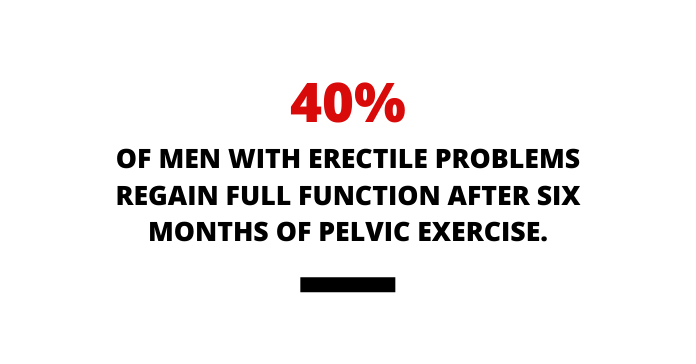
Beyond preventing dysfunction caused by aging or pregnancy, kegels also help people recover from surgery. Approximately 80 per cent of prostatectomy patients experience incontinence issues, and a 2019 study found that pelvic floor muscle training before and after surgery improved patients’ recovery time by several months. Meanwhile, vaginoplasty patients who attended pelvic floor physiotherapy before and after surgery were about three times less likely to experience pelvic floor dysfunction than those who attended only after.
For many people, it’s a good idea to train your pelvic floor muscles regularly, and a number of health clinics have published helpful online guides on how to perform kegel exercises at home. But Drodge warns against simply starting to exercise alone without direction, particularly if you’re already experiencing some kind of pelvic dysfunction. If you don’t know what is causing problems down there, you could potentially make matters worse by exercising—for example, if your urinary incontinence is caused by overactive muscles instead of underactive ones. Your family doctor can refer you to a pelvic floor therapist who can help you determine whether kegel exercises are the right fit.
Drodge is happy about the trend toward open conversations about the pelvic floor, spurred by the rise of available information online and word-of-mouth among physiotherapy and post-surgical patients. But even for people who are perfectly healthy, she says, it’s good to “get to know a part of their body they’re not familiar with.”
Now that you know the health benefits of kegel exercises for men, find out 13 secrets your urologist wants you to know.
If you’ve ever stumbled into the kitchen during the wee hours of the night to satisfy that Ben & Jerry’s craving only to realize you can’t see a single thing in your freezer, you know how much of a dilemma this can be. So why is there a light in our refrigerators but not in our freezers? We finally have an answer.
As it turns out, the reason behind this dark mystery (literally) actually makes sense. Robert H. Frank, a professor of economics at Cornell University, says it all boils down to what’s called the cost-benefit principle. The cost to install an automatic light in a freezer is the same as the cost to put one in a fridge, and that amount doesn’t change, regardless of how many times you open the door and turn on the light. The benefit of the light is that your food is easier to find. However, since people tend to open their refrigerators more than their freezers, the cost of adding a freezer light outweighs the benefits. For manufacturers, the money they save justifies their decision to forego that second light.
Unfortunately, it doesn’t look like most freezer manufacturers will be installing lights anytime soon—but that doesn’t mean these magical contraptions don’t exist.
“In general, the benefit of such features, as measured by what people are willing to pay for them, tends to increase as income increases,” Frank writes. “The cost-benefit principle thus predicts that consumers with high incomes might think a light in the freezer is well worth the extra cost.”
Next, find out how to prevent freezer frost.
Frost buildup in your freezer can cause a wide range of problems for the appliance and the food stored in it. But do you know what causes freezer frost—and, better yet, how to prevent it?
What is freezer frost, and what causes it?
Accumulated frozen moisture on the interior walls and shelves of your appliance is commonly known as freezer frost. It occurs when “moisture comes into contact with the evaporator coils inside your freezer and then freezes,” according to General Electric.
Moisture collects on evaporator coils a few ways. Leaving the freezer door open too long is probably the most common. A worn or damaged gasket (the door seal) will allow warm air in and cold air to escape, contributing to freezer frost.
Hot food placed in the freezer can also produce humidity, which causes frost buildup. Other sources include malfunctioning defrost timers, heaters and thermostats, according to GE.
The negative impacts
It’s important to take action if you notice frost buildup in your freezer. Here’s what happens if you don’t:
- Reduced freezer storage space
- A foul odour
- “Freezer burn,” those crystals that give your food an off-taste
- Damage to the appliance
Removal and prevention
To remove freezer frost, unplug your appliance and wait for the frost to melt, according to Summit Appliance. Then wipe up all the moisture, let everything dry and plug the appliance back in. Don’t scrape off the ice with a knife or any other sharp object. That can damage the appliance and the object you’re using.
Here are a few prevention tips to avoid frost buildup:
- Don’t open your freezer door longer than necessary
- Regularly check the gasket for damage
- Double-check to be sure the freezer door closes completely
- Only place cooled food in the freezer
- Do not place the freezer near warm appliances like a furnace, dryer or water heater
- Leave room between the back of the freezer and the wall
- Be sure the freezer is set to an appropriate temperature
Next, find out why there isn’t a light in your freezer.

It all began with the Toyota Supra Mark I. Manufactured from 1978 to 1981, the Mark I transitioned into the Mark II, built from 1982 to 1986; both were larger sports versions of the Toyota Celica. The Mark III was introduced under its own model name in the second half of 1986, with a totally new body design and a naturally aspirated, straight six-cylinder engine driving the rear wheels. A turbo-charged version was made available in 1987. The Mark IV, also a turbo, was introduced in 1993, at a time when sports-car sales were declining and the value of the Japanese yen was increasing, so this model was (and still is) very expensive. These factors led to sales of the Mark IV ending in Canada in 1996, in the United States in 1998 and in Japan in 2002. Toyota reintroduced the Supra in 2019 as the Mark V, which is the model available in dealerships today.

My Toyota Supra Mark III
My Supra is a red 1987 Mark III turbo with a removable roof panel (as close as I could get to a convertible). It has a burgundy leather interior, five-speed manual transmission and a six-cylinder inline turbocharged engine. I am the original and only owner of this car, and I keep it because I have a passion for it like no other car that I have ever owned.
I initially owned British sports cars—a Triumph TR4 and an MGB. Then I moved on to an American Trans Am (during the oil crisis!) and then finally bought the Supra, my version of a family car. I currently drive a large, comfortable sedan but my Supra is still in the garage, awaiting its engine work.

I bought the Supra new in March 1987 and drove it continuously until 2001, when we began to store it in the garage during the winter months. It has been in long-term storage since 2009 because the head gasket needs to be replaced, which is something I am not going to attempt myself. I take the car out of the garage every spring, wash it, drive it around the block and have pictures taken by my wife, Paula. All of the kids and 70-somethings love it. I believe that it is a beautiful-looking car, and it’s in great condition. Once the head gasket is replaced, it will be technically sound and reliable (after all, it is a Toyota). This car is not needed as my main means of transport, as I have outgrown the manual transmission and firm ride of sports cars, but it’s still a blast to drive and great fun to cruise around in. I’ve often been complimented on its appearance and asked if it’s for sale.
I have owned it during postings to the U.S. Naval Academy in Annapolis, Maryland, the Joint National Test Facility (JNTF) in Colorado Springs, Colorado, and the Canadian Forces headquarters in Ottawa, and it has been a hit wherever it goes. It has been around the block but still has only 128,000 kilometres on the odometer.

I am currently studying the theoretical electronic technologies that eventually replaced the mechanical systems used in older classic cars. From the early theoretical stages, a platform was developed for the introduction of many new technologies that are now common in modern automobiles. For example, my Mark III Supra has twin overhead cams, electronic fuel injection, turbocharging, and a computer-controlled engine-management system constantly monitoring the states of all inputs. It also has anti-lock brakes and a driver-selectable variable-damping suspension system. The study of these technology applications will keep me busy for many years to come.
What I like best is the look of this car and the technology involved in its operation. It is great to drive and even just sit in, as it brings back so many fond memories of my younger years. There is an incredible feeling associated with this car that makes it worth much more to me than any monetary value it may have. It is providing me with a fantastic retirement hobby.
I love this car.
Next, read the incredible story of how one man missed out on his dream car as a teenager, then found it parked in his driveway 25 years later.
Could you imagine someone sneezing and then just sitting in silence as they compose themselves? We’re cringing at the awkwardness just thinking about it. But aside from making both you and the sneezer feel uncomfortable, failing to say “bless you” in response to a sneeze goes against the etiquette that’s been ingrained in us since childhood. But why do we say “bless you” when someone sneezes? We have some answers for you.
Why do people say bless you?
There are many theories about the origins of the phrase “bless you,” but most theories circle back to the idea of superstition. Google states that superstition is the “excessively credulous belief in and reverence for supernatural beings.” What do ghosts and demons have to do with ahchoos, you may ask? Well, for starters, one of the most popular ideas dates back to the time of the bubonic plague. Since one of the main symptoms of this illness was sneezing, Pope Gregory I believed that saying “God bless you” as a tiny prayer after someone sneezed would shield them from death.
Another theory comes from an ancient belief that sneezing may actually free the spirit from the body. Unless, of course, God blessed you and prevented this from happening. Some even believed that the spirits that left the body were only evil, so if they were expelled from the body, the evil spirits would be free to roam with everyone else. And trust us, you did not want to be walking around with evil spirits.
What does gesundheit mean?
In addition to saying “bless you,” you may hear the word “gesundheit” being thrown around. “Gesundheit” is actually the German word for “health.” The word was formed as a combination of the word “gesund” meaning “healthy” and “-heit” meaning “-hood.” After a sneeze, offering that person good health was believed to hold off any illness that may come. Since many immigrants to Canada came from Germany, plus Canadian soldiers fighting two World Wars in Germany, it makes sense why this word has been seamlessly woven into our vocabulary.
So, while all of this “bless you” business is based around superstition and ancient beliefs, what’s the harm in wishing someone good health? May all your sneezes keep the evil spirits at bay, fight off any serious illness, and leave you with the beautiful satisfaction that a good sneeze offers.
Now that you know why people say bless you, find out why there’s an “r” in Mrs.


